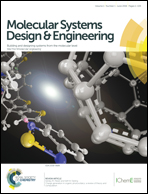Designing hyperbranched polymers for gene delivery†
Abstract
Gene therapy through delivery of nucleic acids to the affected cells is a promising option for the treatment of various diseases. However, the delivery process is hampered by a series of barriers including gene packaging, in vivo and intracellular barriers. To overcome these obstacles, numerous vectors have been developed to achieve improved safety and enhanced gene transfection efficiency. Among these vectors, cationic hyperbranched polymers (HBPs) have attracted much attention due to their unique properties (e.g. low viscosity, good solubility, and multi-functionality) and three-dimensional globular structures. Thanks to the flexibility of HBPs, these properties can be tailored to overcome the above-mentioned barriers and develop an optimal gene vector. For example, HBPs with adjustable charge density can tightly condense nucleic acids and maintain polyplexes in solution. Besides, biocompatible HBP-based polyplexes can survive in the blood stream and penetrate the blood vessel wall and surrounding tissue. Furthermore, the stimuli-responsive HBPs release their genes at an appropriate point in the delivery process after endolysosomal escape. All of these properties are important in designing novel vectors for efficient gene delivery. Till now, many works focusing on tailoring cationic HBPs' properties for efficient gene delivery have been reported. This review briefly summarizes the main barriers of gene delivery, how to control the corresponding properties and recent progress of HBPs for gene delivery. After understanding the obstacles deeply, we hope to motivate the delicate design of cationic HBPs for clinical gene delivery applications.


 Please wait while we load your content...
Please wait while we load your content...